Plasma blepharoplasty: what is it?
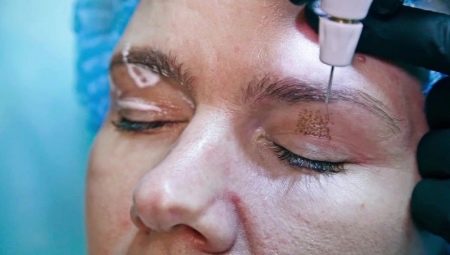
The desire of a woman to prolong the natural beauty of her face more and more with age. Modern opportunities allow you to do this without resorting to surgical intervention. One of the methods of rejuvenation is non-surgical plasma blepharoplasty.

What it is?
Plasma blepharoplasty is an innovative hardware technology. A procedure for lifting the eyelids with cold plasma, which is the fourth state of aggregation of any substance. Essentially, this is skin coagulation that does not heat up nearby tissues. The technique provides for the elimination of wrinkles by exposing the device's tip to the skin at regular intervals.
During the procedure, a plasma arc is created between the needle-shaped attachment and the surface layer of the skin. A controlled burn or microscopic damage to the dermis after regeneration can improve its condition, while reducing the area of the epithelium. The method is a kind of alternative to the current procedure, but it is less invasive and gives a more pronounced result in rejuvenation at the sites of exposure.
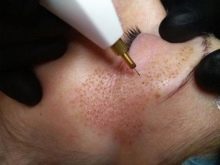
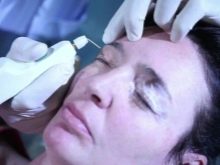
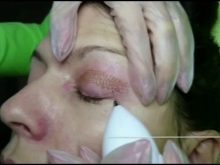
Method essence
Plasma consists of charged particles, radicals, ions, electrons, and neutral ozone atoms. When the skin is sublimated, there is no painful sensation at each point of contact, since local anesthesia is used when it is performed. The technology eliminates bleeding and damage to surrounding tissues. The skin is affected by injections, eliminating fat deposits in the eyelids, bags under the eyes. Removes sagging skin.
The dermis shrinks and heals. The non-surgical method of lifting the eyelids is based on dissolving the fat layer, removing excess moisture, as well as regenerating damaged skin layers.The tiny scales usually fall off within a week.
The effectiveness of the procedure becomes more pronounced 3-4 weeks after it is carried out and lasts up to several years.
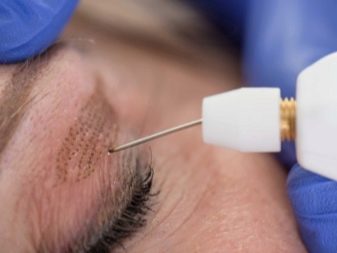

How is it going?
Initially, the patient's skin is cleaned of cosmetics or impurities, after which it is treated with an antiseptic. Then an anesthetic is applied to the sites of future plasma exposure. This bandage is not always used, since usually plasma blepharoplasty itself is not associated with severe discomfort. After 15-20 minutes, the anesthetic is removed and the skin areas selected for correction are processed.
They are exposed for a short time by touching to produce a plasma discharge. Do not delay touching the needle and skin, as this may cause burns. It is possible to increase the duration of touching the nozzle only when it is necessary to remove a benign formation, wart, papilloma. When a full eyelid lift is performed, treat the entire area with short touches.
At the same time, a nuance is taken into account - the greater the severity of wrinkles, the smaller the distance between the points of influence should be. Sometimes the distance does not exceed 1 mm. When the wrinkles are deep, the ablation points are chosen as close as possible to the crease itself. In rare cases, the folds act on the inside of the wrinkle. To do this, it is straightened and processed over the entire depth of occurrence.
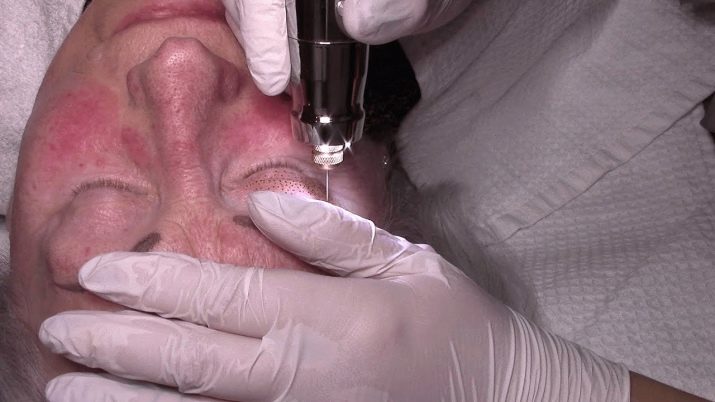
Based on the client's preferences and indications, it is possible to process during one procedure not only a certain part of the site, but also it completely. Thanks to this, you can not reduce your social activity. At the end of the treatment of problem areas, the skin is again treated with an antiseptic without an alcohol base. After that, a wound-healing cream is applied to it.
Formations on legs, which include papillomas and condylomas, are removed by introducing a needle under the neoplasm itself. Its protruding part is grasped with tweezers. Where the formation grows from the skin, a narrow isthmus is selected and treated with a plasma beam, cutting off the tissue. To get rid of warts with plasma current, a layer-by-layer method is used.
It is more effective and deep, it allows you to destroy the roots of the warts. After it, small pits remain at the treatment site, which the patient should know about before starting the procedure. But if the roots are not removed, the problem will not be eliminated - the warts will reappear. All used attachments are subject to sterilization, similar to medical instruments. The needles used are disposable.

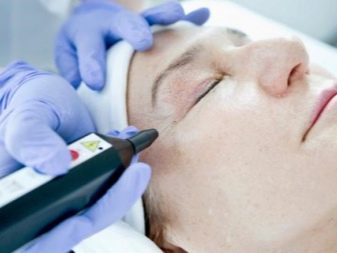
What problems does it solve?
Plasma blepharoplasty is considered an effective treatment for upper eyelid ptosis. Sublimation of the skin takes place at every point. Plastic can remove dark circles around the eyes, skin puffiness, bags and other swelling. It is an effective tool for combating fine wrinkled mesh and drooping of the upper eyelid. This treatment can help nourish dry skin.
Plasma Pen is the latest development of hardware cosmetology and is intended for face correction. The influencing tool is a needle-shaped attachment. Plasma Liner blepharoplasty can not only reduce the severity of wrinkles and rosacea.
It is designed for:
elimination of stretch marks;
whitening of the dermis;
elimination of dark circles around the eyes;
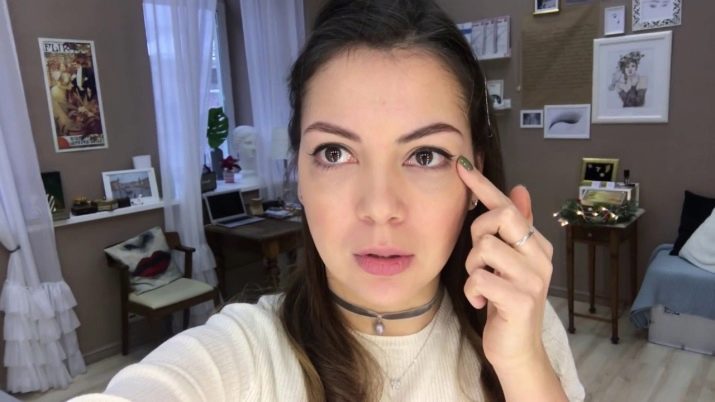
getting rid of acne;
papillomas;
skin tightening.
The procedure is characterized by a small area of influence. It is short-lived and produces long-term results.
Plasma BT technology is based on the ionization of air, from which plasma is generated. Charged particles affect problem areas of the face, so the skin around is not scalded. Using the finest attachment in the form of a sterile disposable needle, the specialist creates a fine network under the skin.
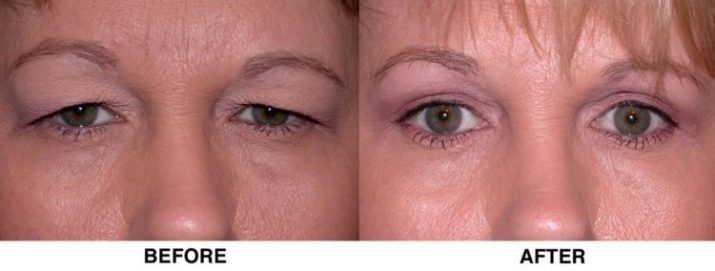
Contraindications
Despite the benefits of plasma blepharoplasty, there are reasons that limit its use.
For example, it is contraindicated:
in the presence of acute or chronic diseases at the stage of exacerbation;
when recovering from eye surgery;
during menstruation;
diabetics;

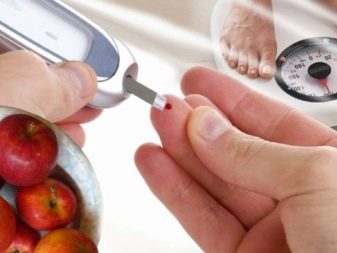
with myopathy;
with problems with blood circulation;
the presence of anemia, keratitis, blepharitis;
with any damage to the cornea.
The procedure is not recommended for people with cancer.
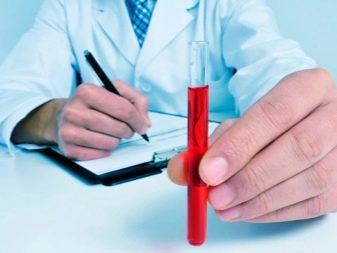

Rehabilitation and recommendations
You cannot expect a quick and dramatic effect immediately after the procedure. As a rule, the first week after surgery is considered the beginning of the recovery period, which averages 2 weeks. After the procedure, there may be redness and even inflammation on the skin. The skin around the eyes may become swollen. After two weeks, the effect of the procedure becomes noticeable.
If you feel painful, your doctor may prescribe pain relievers. The doctor will make sure that the recovery proceeds without complications. In addition, the doctor will give the patient recommendations, since the healing skin will not only peel off, but also itch.
Also, the patient is prohibited from:
do not scratch the skin;
rub your eyes;
it is unacceptable to use contact lenses if the patient has done so before.
It is important not to forget to visit a specialist until rehabilitation is over.

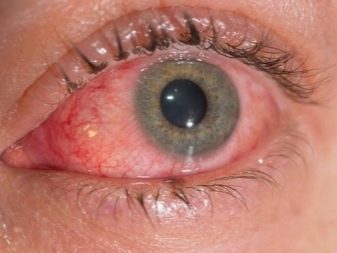
To reduce the strain on the eyes, you will have to give up any eye strain for some time.
It is necessary to follow the standard measures, which include the refusal to:
smoking and drinking alcoholic beverages;
applying daily cosmetics, foundation, highlighter, powder.
If you follow all the rules and recommendations of the doctor, the effect of the cosmetic procedure will last for 3-5 years. During rehabilitation, it is necessary to ensure that the skin is constantly clean. If you do not take into account basic hygiene standards, this will lead to complications.
Until the dermis is restored, you can not wash it, visit the sauna or bath. Until crusts form on it, the skin must be wiped with an antiseptic that does not have an alcohol base. In order not to lengthen the rehabilitation time, it is impossible to peel off the crusts. They should fall off on their own, after which you can wash your skin using soap.
Dry cold (ice) can be applied to relieve discomfort by wrapping it in a napkin.


Complications
Despite the fact that puffiness at the initial stage is considered the norm, it cannot be ignored. If the swelling persists for a long time, urgent measures must be taken. Other complications after plasma blepharoplasty include hematomas. They can be located under the eyes or under the skin at the site of exposure.
Many problems appear not due to the negligence of a specialist, but due to the lack of hygiene rules after plasma blepharoplasty. Before carrying out the procedure, it is worth carefully studying the choice of clinic based on the reviews of those who have already done similar procedures with certain specialists.
It is important to understand that any cosmetic effect carries with it certain risks. You cannot resort to it if the problem is not so tangible.
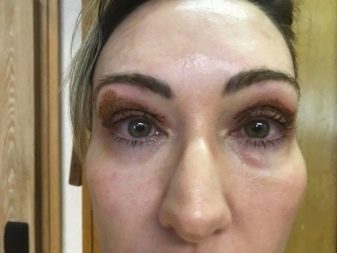
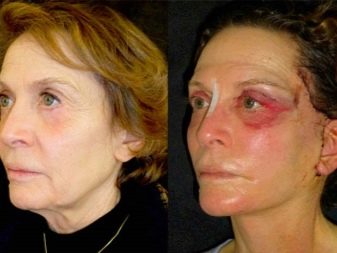
For information on how the plasma blepharoplasty procedure goes, see the next video.








